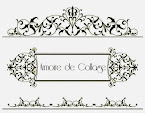Friday, December 20, 2013
Train-cipation
'Traincipation'...the anticipation children experience waiting for dad to get the electric trains out and set up for the holiday season. The electric train is probably the toy most synonymous with Christmas. Originally intended as a store front display to draw customers into the stores, the "Electric Express" became the most requested item, spawning a toy business that reached $25 million in sales per year, at its peak in the 1950s.
The original train was produced by Joshua Lionel Cowen in 1901, who founded the Lionel Corporation the previous year to produce electrical novelties, such as fans and lighting devices. The electric train remained at the top of the Christmas wish list for many years, until the Great Depression. It was considered an extravagance at the time as the most expensive locomotives cost as much as a used Ford Model T.
Unfortunately the Great Depression was followed by World War II, and Lionel ceased toy manufacturing in 1942, to produce nautical items for the United States Navy. The decade following the war, 1946-1956, was the Golden Age for Lionel. The colorful Santa Fe "Warbonnet" paint scheme introduced in 1948 (the Lionel 2333 diesel locomotive) became a bestseller. Model railroaders soon shifted to the smaller, more detailed HO scale trains, complete with paraphernalia that included buildings and landscaping. Th HO gauge and slot car racing sets were the rage in the 1960s, but never reached the popularity of the O-gauge trains. The more affordable plastic, molded cars (as opposed to metal castings and folded sheet metal) didn't significantly increase profitability, but provided a more realistic-looking train layout.
The former Lionel factory in Irvington, New Jersey, and the Hillside, New Jersey factory, were virtually the front and back doors of the same building. On April 14, 2004, a fire destroyed the former Lionel train factory located in Irvington. The old Lionel factory in Hillside where trains were manufactured in the early 1920s to 1969, survived.
The decline in model railroading le to bankruptcy, and although the value of the company dropped, the prices of the older O-gauge trains skyrocketed. Pre-WWII trains, based on condition and completeness of the train set, will start at $500 and go up. In 2006, Lionel's electric train became one of the first two electric toys to be inducted into the National toy Hall of Fame. Although no longer a popular hobbyist pastime, many of these vintage Lionel O-gauge trains are still pulled out during the holidays and set up as an integral part of the Christmas display...the purpose for which they were originally intended.
Labels:
antique,
collectible,
collectibles,
HO gauge,
Lionel,
train,
trains,
vintage
Subscribe to:
Post Comments (Atom)




No comments:
Post a Comment